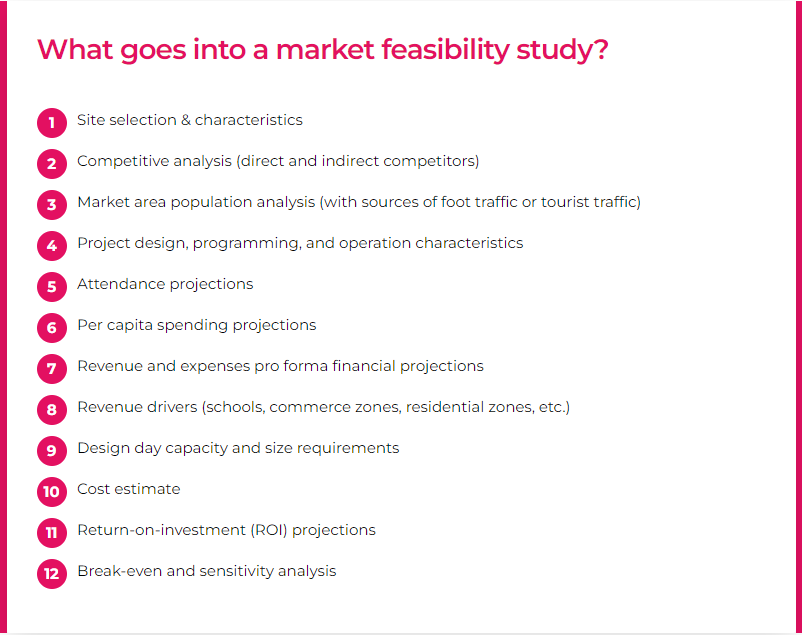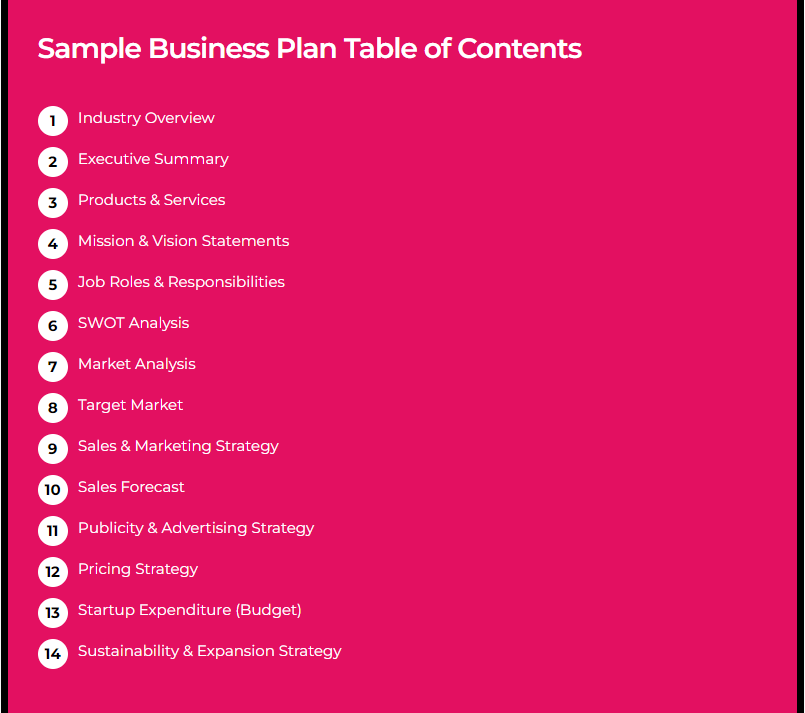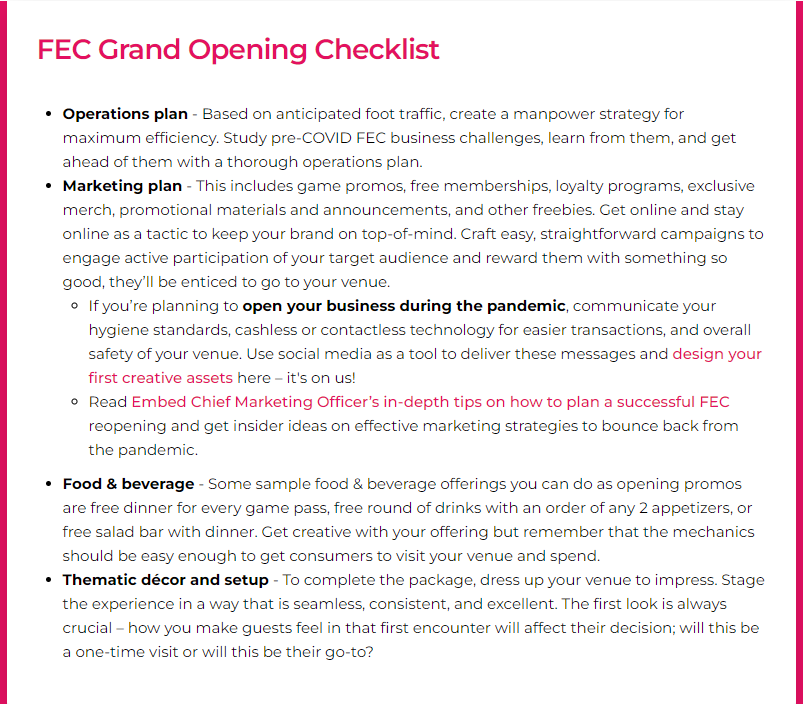
This educational post was provided by Kathleen Goy from Embed.
So you want to start a Family Entertainment Center business?
A family entertainment center (FEC) is a venue where experiences such as games, attractions, and other activities that appeal to different age groups or families are offered. It will take more than bright and creative ideas to start your own family entertainment center business. This simplified guide will help you figure out how to start an FEC. These 10 necessary steps and procedures enable you to kickstart your dream venture and allow you to get the best results.
To start a family entertainment center, one should understand that the attractions are not the products – it’s the experience. Learn more about the emerging Experience Economy here. Depending on your business idea, FEC theme, and location, there are also different types of family entertainment center activities to choose from.
From venue to revenue
Starting a family entertainment center business includes various steps to success. Before taking that first step, it is imperative to understand how a venue will generate income for your intended business. Guest spending may consist of the following:
- Admission fees
- Food and beverages
- Tokens and other game currencies
- Retail
- Rentals
The International Association for Amusement Parks and Attractions (IAAPA) statistics show that families go to FECs at least three to five times a year and spend a range of $12 to $22 per visit – and this is just in North America. In a 2019 benchmark series, IAAPA found that guests spent $25 on average at individual location FECs (overall expenses including admission, games, food and beverage, retail, and rentals).
In the same study, IAAPA notes that one-third of individual location FECs reported revenue exceeding $1 million in 2019, with an average profit margin of 14.8% (the estimated profit for the facility operates as a percentage of revenue).
Not only does this support how profitable the FEC business model is, but how effective an avenue it is for creating experiences that convert to revenue.
10 Steps to starting a Family Entertainment Center business
1. Identify Business Goal & Business Type
The ‘why’ fuels the FEC operator. Aside from the money, what value are you expecting from starting an FEC business? Is it for the challenge of developing a thriving business? Is it to provide a venue to entertain families and friends for years? Is it to be at the center of fun while earning?
The ‘why’ is usually tied to an individual’s passion and drive. This same passion, spirit, and energy will come across in everything you do and will inform every single business and operating decision you make, so it is imperative you are clear on ‘why’ you want to start an FEC and enter the industry of fun.
The heart and goal of your business will be the main driver of loyal guests and customer returns. What makes your business unique? Guests can be entertained with the same offering someplace else, so it is the core (the ‘why’ you are in business) of a company that will inspire loyalty and returns.
Having a well-defined business goal will help you envision what type of customers you want to cater to, what type of venue will make these customers participate actively, and what type of experience you want them to enjoy.
The goal points the business in the right direction and leads it to sustained success. The birthday party circuit Discovery Zone had a rough couple of years because of failing to create a seamless guest experience – poorly maintained games, inconsistent event staging, and paying little attention to the adults’ experience– they are the paying customers after all; they matter. It is imperative to set a business goal that is tied to a value system (why you’re in business and how you want to run your operation), stay true to it, and continuously evolve and innovate to achieve it.
According to the Harvard Business Review, before a company can charge admission or put a price on the experience it offers, it must design, market, and deliver the experience excellently.
There are a lot of profitable and sustainable family entertainment business ideas to choose from. You also have two choices: Will you start your own FEC from scratch? Will you purchase an existing FEC franchise?
Get inspired with these 8 Family Entertainment Center Business Ideas.
2. Determine Target Customers
Members of a family have different interests and are entertained for different reasons. Will your FEC focus on entertaining the family as a whole? Will it be for children only? Is it intended to be an amusement center for adults and teens?
Identifying your target audience will give you ideas on what your FEC needs when it comes to theme, hardware and equipment, activities to add to the venue, and so on.
By analyzing the market population in the area where you intend to open the business, you can better determine the project’s profitability.
Market population analysis factors:
- Local drive-times – The average distance people will travel within an urban or suburban primary market area to an FEC is about 15 to 20 minutes maximum.
- Demographics (age and household) – Based on the findings on local drive-times and identified target areas therein, how many households and people are there? This information can be accessed at the local Chamber of Commerce, Community Business Office, or the city or state’s website.
From this data set, compute how much that will equate to gross revenue. To have an initial sense of this, derive from the IAAPA statistics presented on visits:
(Number of people within target age group) x (3 to 5 or the number of visits per year) x
($12 to $22 or the average dollar spend per visit) = Estimated Gross Revenue
3. Make a Feasibility Study
Conducting a FEC market feasibility study is necessary to identify whether the business idea is good, appropriate, profitable, fundable, and in the right place and time. This will also help you pinpoint the risks and benefits of the business idea – whether to go for it now or shelve it for later.
You are likely going to need to work with an FEC consultant to conduct the study. It can cost from $5,000 to $15,000 based on the level of complexity and locations being studied.

Read more about how to do a market feasibility study for FECs.
4. Secure Capital & Funding
A number of FECs are family-owned and operate at one location. There are also FECs that are operated by multiple location owners. As for tapping into other financial resources other than yours, funding is another crucial operational necessity.
To secure funding, you need a business proposal covering your type of FEC, prospective location, your market feasibility study, financial feasibility study, and analytical report. Keep in mind that feasibility studies are written and conducted with prospective investors in mind.
To get capital and funding, business proposals should…
- Project potential financial performance.
- Provide a good estimate of operating costs for the next 2-3 years.
- Identify a ballpark figure for development costs.
- And provide justification for total development costs needed to achieve return-on-investment (ROI) to investors.
If you’re looking for funding, here’s a list of 5 Proven Sources of Funding for an Arcade or FEC Business.
Start-up investments are usually 20 to 30% personally funded. If this is over your capacity, there may be a need for equity investors. These professionals will provide investment dollars in exchange for a percentage of the business.
5. Create a Business Plan
Market and financial feasibility studies are different from an FEC business plan. The former shows the potential performance of the business venture, taking into consideration that it is managed effectively.
The business plan is the ‘how’ of achieving optimal management and operations that will back the identified potential in the feasibility study. In simpler terms, the business plan is proof that you can make the dream happen.
It is good to note that a positive feasibility study does not necessarily guarantee a successful business. A business plan, however, can help you determine the course of the business – from operations, management, and everything in between to make the possibility a success.
A business plan should include attendance projection, per capita spending, revenues, expenses, replacements, and cost estimates, among other things.

Read our blog about “How to Craft Your First FEC Business Plan” here.
6. Conceptualize & Design
Depending on the type of FEC, scope, audience, and location, an initial design and concept development work is essential to wow prospective investors and lenders. This is generally required for FECs seeking an investment of $2 million dollars or more. For smaller businesses such as a simple indoor soft play, this may not be required in the proposal.
The FEC’s theme should cater to the ‘why’ of the business, its estimated foot traffic, target audience, location, and activities and attractions offered. Urban Air Adventure Park started out as a simple trampoline park, with moms as their customers and kids as their users. Through the owner’s love for data analysis, Urban Air used the business data to evolve into a technology-driven, fully innovative experience – complete with attractive yet affordable food and beverage offering, thematic designs, and immersive attractions.
When doing this, it is smart to work with professional design firms in the amusement industry to stay consistent with your FEC’s theme. Here are 5 Family Entertainment Center Interiors Inspirations to get your creative juices flowing.
Apart from the theme and design, this is also the point where the floor plan and construction blueprint are pinned down.
In IAAPA’s 2020 Benchmark Series, arcades (redemption and non-redemption) are the most common attractions for FECs and are mostly managed in-house. At the same time, these attractions account for more than 40% of the floorplan.
The statistics also show that arcades represent the top revenue sources for FECs. These data are essential to conceptualizing and designing your business.
7. Get Licenses & Permits
Once funding and permits are secured, you can start building the FEC from the ground up. Running any business requires significant paperwork, and there are specific licenses and permits needed to operate an FEC. These depend on location, nature and scope of FEC, among others:
- Zoning approval
- Health permit
- Environmental permit
- Fire department permit
- Special state licenses (for businesses which serve alcohol)
8. Choose the Right Technology
The FEC industry has been heavily impacted by advances in technology in a span of years. Advancements in home video game console technology in the 80s caused a great decline in the ‘Golden Age of Arcades,’ resulting to a huge gap in revenue from $8B in 1981 to $2.1B in 1991.
Since then, almost every touchpoint of the business has been automated. Those that fail to jump on the wagon and follow tech trends cease to continue because they have become irrelevant. However, arcades can now be supercharged with hardware solutions that bring even retro games to the digital age.
Technology is considered a business essential in this digital day and age. Consumers will not tolerate a poor guest experience due to a low-tech business. This is why you need to stay up to date if you want consumers coming over, otherwise it will lead to poor customer reviews and negative advocacy.
When used strategically, business operations and management can be conveniently integrated in a way that reduces operating, labor, and maintenance costs. Most of all, the guest experience is enhanced.
Selecting the right hardware and software for your FEC is just as important as picking the best people for the business. With the right combination of hardware and software, these technological business solutions can already stand as your 24/7 employees.
FEC software should collect data, pinpoint problems, and generate results and notifications in real-time to reduce costs while increasing profitability. In short, the software should simplify the backend of the business.
From a customer standpoint, consumers desire seamless, personalized, socially shareable, and convenient tools that keep them immersed in the experience with little to no disruptions. The speed and immediacy of the experience are critical to your success. In the fast-paced world today, guests are intolerant of wasting time waiting in long lines and outdated or no technology to ease transactions that should be seamless.
Depending on the nature of your FEC business, here are some of the hardware and software solutions worth consideration:
Types of FEC Technology:
- Secure and reliable internet & IT infrastructure – FECs are heavily reliant on digital devices and online systems to provide a seamless guest experience. It is crucial to obtain networking technologies such as WiFi-6 and 5G to ensure there are fewer interruptions to the customer experience. Software-defined wireless area network (SD-WAN) creates a predictable experience and enhances user protection from external threats. For stronger security with improved remote access, a multi-cloud network can be implemented to withstand potential cyber-attacks while complying with Data Protection regulations.
- New-tech games – Games should grow with the gamer, and a digital-savvy customer expects to stay trendy. One of the latest trends is virtual reality or VR. Compared to traditional arcade, VR is a more immersive experience, usually without the need for staff assistance, similar to what LAI Games offer.
- Progression games – From the name, this kind of game allows customers to save their game progress through game cards, enabling them to earn rewards and loyalty points.
- RFID wristbands –The currency of family entertainment center businesses today is wearable media that aren’t just means of payment but can also act as a key to your loyalty programs in the future. Disney’s magic band was used by 99% of its customers during its day and forms the central part of the magical experiences they offer in the parks, as well as connecting data to guests in a reliable system that enables Disney to drive return visits via promotional offers.
- Self-service kiosks – These full-service devices can act as an FEC’s 24/7 employees, complete with a built-in server, cashless mode of transactions, and convenience. The effectiveness of self-service kiosks leads to cost-cutting, more upselling features, and additional revenue just like Midwest Coin’s experience of up to 40% increase in gross profit.
- Arcade debit game card readers –With hardware like readers, token or ticket jams can be avoided. This lessens game downtime – a window when you’re not making revenue – and game maintenance cost, which can significantly cut into your profit. At the same time, integrating games with game card readers lowers overall cost of goods as tickets will be added to guest cards instead.
- Game cards –Aside from their typical usage as currency and a tool for loyalty programs, game cards are considered as your business branding that customers have on hand, keeping your brand (and brand experience) top of mind.
- Mobile Wallet integration -In today’s low-touch economy, contactless and cashless mobile payment solutions increase guest spending as it removes the hassle of losing time in long lines and leaving a game or attraction to top-up or reload the game card, which is a revenue interrupter. With a mobile wallet, the guest can top up any time, anywhere, without leaving the game. An operator’s aim is to keep guests gaming (driving revenue). Vouchers from Klook (food, admission, etc.) can be added to a user’s mobile wallet for a more convenient experience.
- Point-of-sale (POS) system – Operating a POS system maximizes upsell workflows or promotions an FEC is currently running. Some systems like this have couponing, customizable UI, and other management capabilities. The strength of a POS system is the ability to bundle offers that drive upsell and cross-sell – the revenue generators that increase spend and drive profit).
- Prize redemption – This system frees up cashiers and reduces wait times by handling tickets electronically and manages and maintains prize inventory. As a result, prize redemption rates are higher and costs on tickets and maintenance are lowered.
- Customer loyalty & referral system – Acquiring a new customer costs around 5 to 25 times more than retaining a loyal one, according to the Harvard Business Review. However, increasing customer retention rates by 5% can increase profits by 25% to 95%, which is Bain & Company’s “Prescription for Cutting Costs” – building loyal relationships with customers and other stakeholders. A customer loyalty and referral system create an avenue for rewarding customers for returning to the FEC and possibly bringing new customers – both of which future-proofs your business.
- Reservation, ticketing, or booking platform – Having such a system means improvement in an FEC’s ability to manage group events or party capabilities. This allows seamless booking, prepayment, and other customizable packages at a customer’s fingertips.
- Reports generator -Smart reporting capabilities include real-time data reporting, comparisons across key sales periods across different days and the revenue and profitability thereof, inventory updates, trend identification, assessments, and goal management. These analytics are part of the defining numbers of the business, enabling early detection of small issues and avoiding large-scale problems in the future. Without analytical reports, a business cannot optimize to increase profitability, such as being unable to pinpoint what days and time you should offer a specific promotion.
- Product and game management -A subscription-based, third-party supplying software and hosting application over the internet is called Software as a Service (SaaS) or cloud-based software. This allows usage minus the hardware upgrades. For the FEC owner, this means having overall control over machines, including changing game prices for different promos, loyalty rewards, and game updates. The most compelling propositions of SaaS are the elimination of the risk of losing business data and the ability to access the information anytime, anywhere. Cloud-based solutions are not the same as accessing software from a lone server in the Midwest that is at risk in a natural disaster or power outage – that is the same as having the server on your premises without a backup.
- Ambiance technologies –To elevate the customer experience, pay attention to the sight, sound, and smell in the FEC. Some of these are interactive floor light display games and automatic scents and disinfectants to avoid lingering smells of cigarettes or socks. The sensorial experience makes or breaks your brand.
9. Hire Your First Team
Hiring the first team for a new business can make or break its success. The number of employees needed to run an FEC can differ from one business to another. It will also vary depending on the business size and location.
In the 2020 FEC Benchmark Series by IAAPA, it was found that employee payroll remains the biggest expense for FECs. This is one of the reasons why business owners must invest in the correct people. Manpower is an asset; wrong hires are liabilities. At the same time, retaining a strong team is more ideal than repeatedly hiring, training, and developing new people.
10. Start Branding & Marketing the Business
As with any new business, developing the branding and marketing plan is crucial to creating top-of-mind awareness of customers. Most FEC owner-operators become too focused on operations, especially family-run, single location FECs; any planning of marketing efforts is done in reactive mode versus proactive mode. This stunts business success.
Here are some steps to get started on branding and marketing:
Create a brand bible.
This is the go-to reference for all things pertaining to your FEC such as the logo, brand colors, slogan, brand tone and voice, and other indicators of your business. While it is best to have this done by a professional marketer, you can always do it in-house to get started.
Draw up a Family Entertainment Center marketing plan.
A marketing plan should have…
- A clear set of objectives that are suited to the business and are achievable within a given period of time. These goals could either be short-term or long-term.
- A budget for every campaign depending on the duration, platform, and scope.
- Key performance indicators (KPIs) to determine which campaigns work best and what can be improved in those that don’t.
- A strategy on how to execute campaigns and attain objectives.
- A well-defined target market, market segments, and audience profile to communicate your brand messages effectively.
- Evaluations to assess every campaign and effort accordingly.
Read more about Embed’s 5-Step Guide to Marketing Success for Your FEC.
Now that the business is all set, it’s time to open the doors. The grand opening itself must be a statement of what your business promises. Here’s a quick checklist of what you need to prepare for this launch day:

